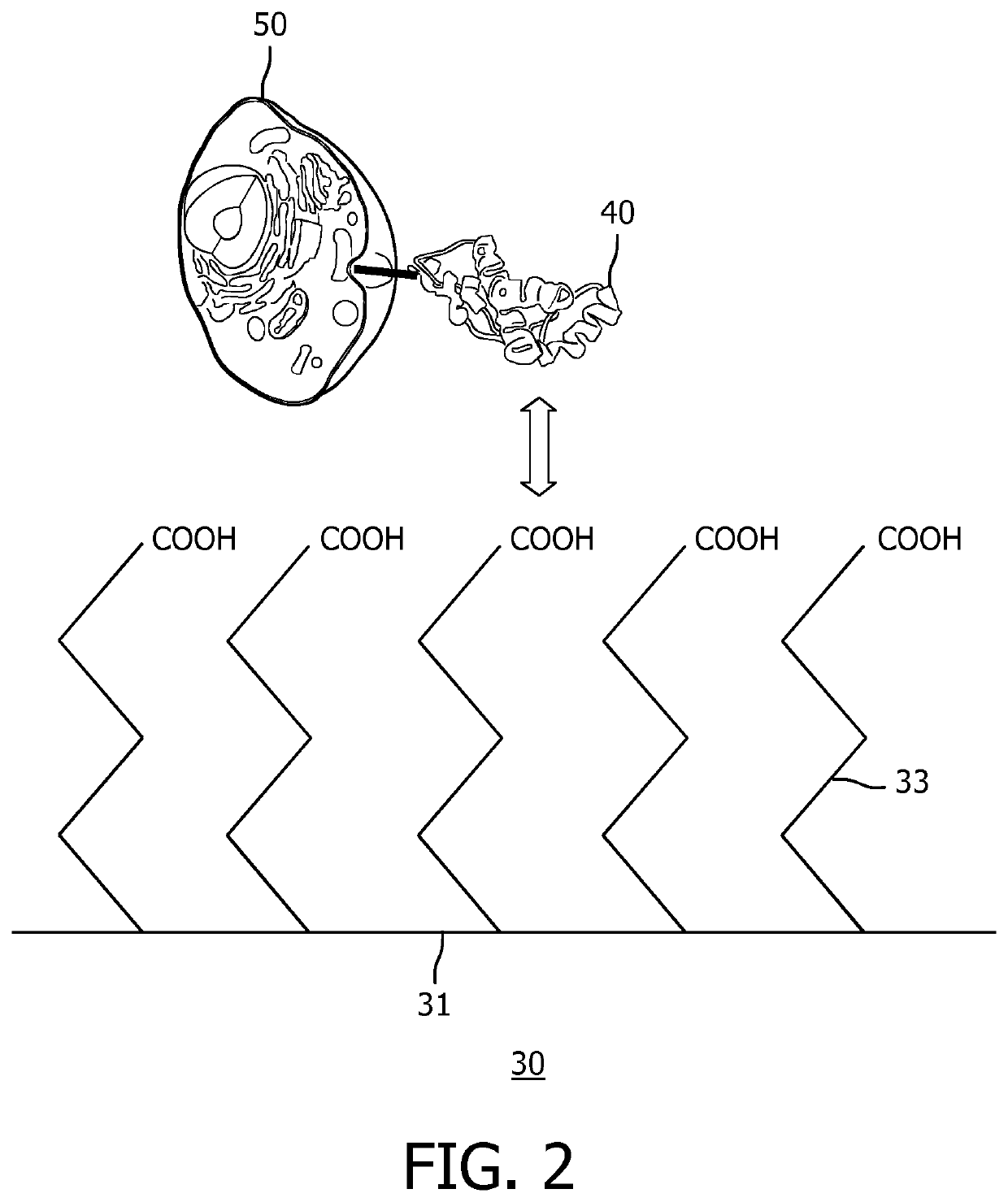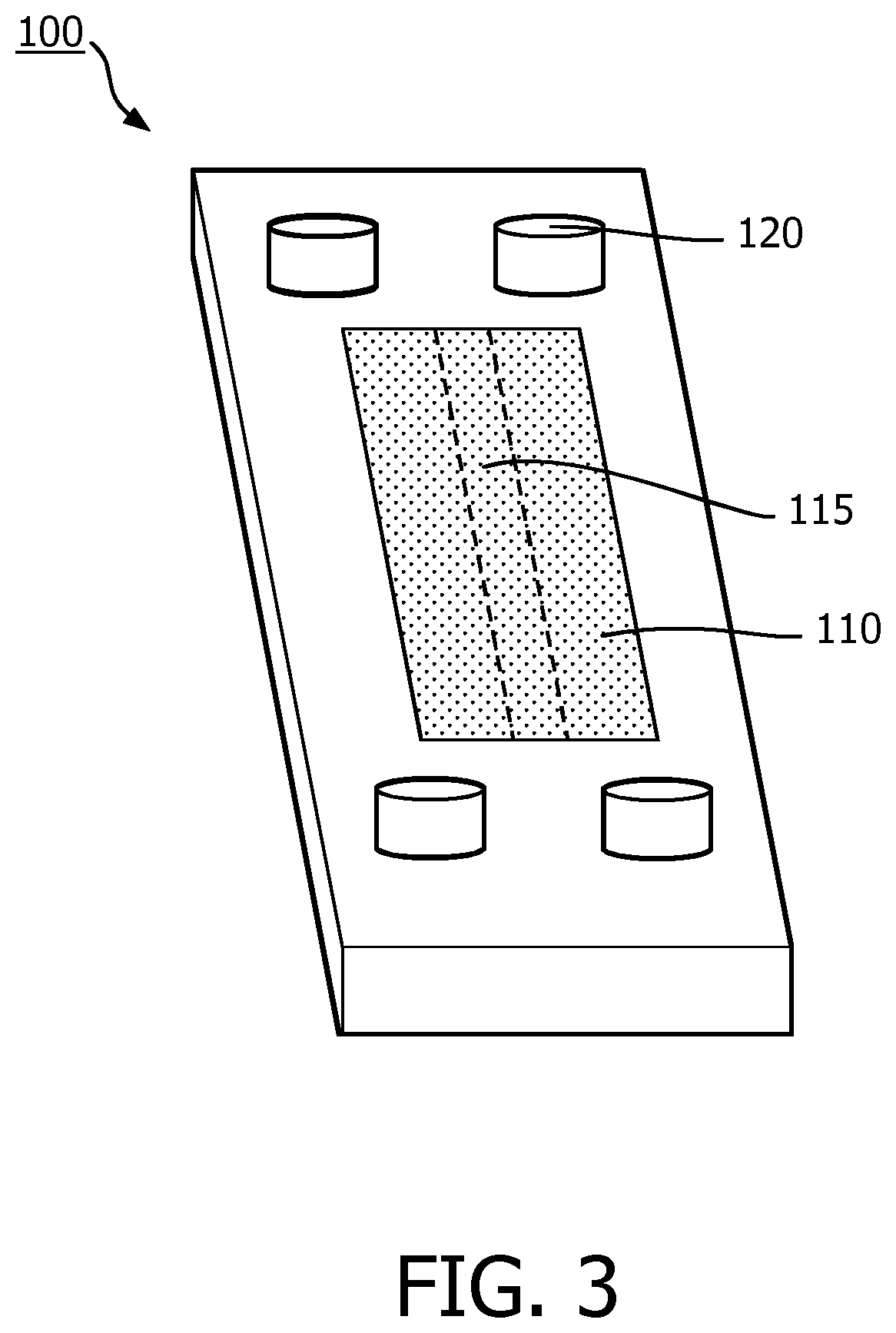Cell cultering materials
- Summary
- Abstract
- Description
- Claims
- Application Information
AI Technical Summary
Benefits of technology
Problems solved by technology
Method used
Image
Examples
synthesis example 1
[0068]Polybutadiene chunks as obtained from Lanxess AG, Cologne, Germany are inserted into a compounder or mix extruder. The chunks contain a peroxide such as Dicumylperoxide as a catalyst. An amount of linoleic acid (60-74% concentrated as obtained from Aldrich Chemistry) in a range of 1-30 wt % by weight of the polybutadiene chunks is mixed into the polybutadiene bulk by kneading at a temperature in the range of 110-150° C. The resulting extruded mixture is injected into a stainless steel mold defining a fluidic device and having an oxidized inner surface contacting the extruded mixture for 3-10 minutes at a temperature in a range of 150-200° C. to yield a monolithic fluidic device module of a polybutadiene rubber cross-linked with the linoleic acid.
[0069]An example synthesis procedure for producing the bulk-modified elastomer from a silicone rubber is given below (synthesis example 2).
synthesis example 2
[0070]A 121 g sodium linoleate solution in water (30 wt %) is mixed into silicone component A (240 g) of Elastosil LR 3040 from Wacker Chemie AG and vigorously stirred under vacuum conditions at room temperature to evaporate the water from the composition. The resultant mixture is mixed with component B (277 g) of Elastosil LR 3040 from Wacker Chemie AG (including Pt-catalyst) and fed into an injection molding apparatus where the resultant mixture is injected into a stainless steel mold having an oxidized inner surface contacting the resultant mixture and defining a fluidic device module and molded for 10-60 seconds at a temperature in a range of 150-200° C. to yield a monolithic fluidic device module of a silicone rubber cross-linked with the sodium linoleate. At higher concentrations of sodium linoleate extra cross linker (polymethylhydrosiloxane) may be added to the reaction mixture to prevent an excess of double bonds of the unsaturated fatty acids decreasing the conversion rate...
PUM
| Property | Measurement | Unit |
|---|---|---|
| Fraction | aaaaa | aaaaa |
| Polarity | aaaaa | aaaaa |
Abstract
Description
Claims
Application Information
 Login to View More
Login to View More - R&D
- Intellectual Property
- Life Sciences
- Materials
- Tech Scout
- Unparalleled Data Quality
- Higher Quality Content
- 60% Fewer Hallucinations
Browse by: Latest US Patents, China's latest patents, Technical Efficacy Thesaurus, Application Domain, Technology Topic, Popular Technical Reports.
© 2025 PatSnap. All rights reserved.Legal|Privacy policy|Modern Slavery Act Transparency Statement|Sitemap|About US| Contact US: help@patsnap.com



